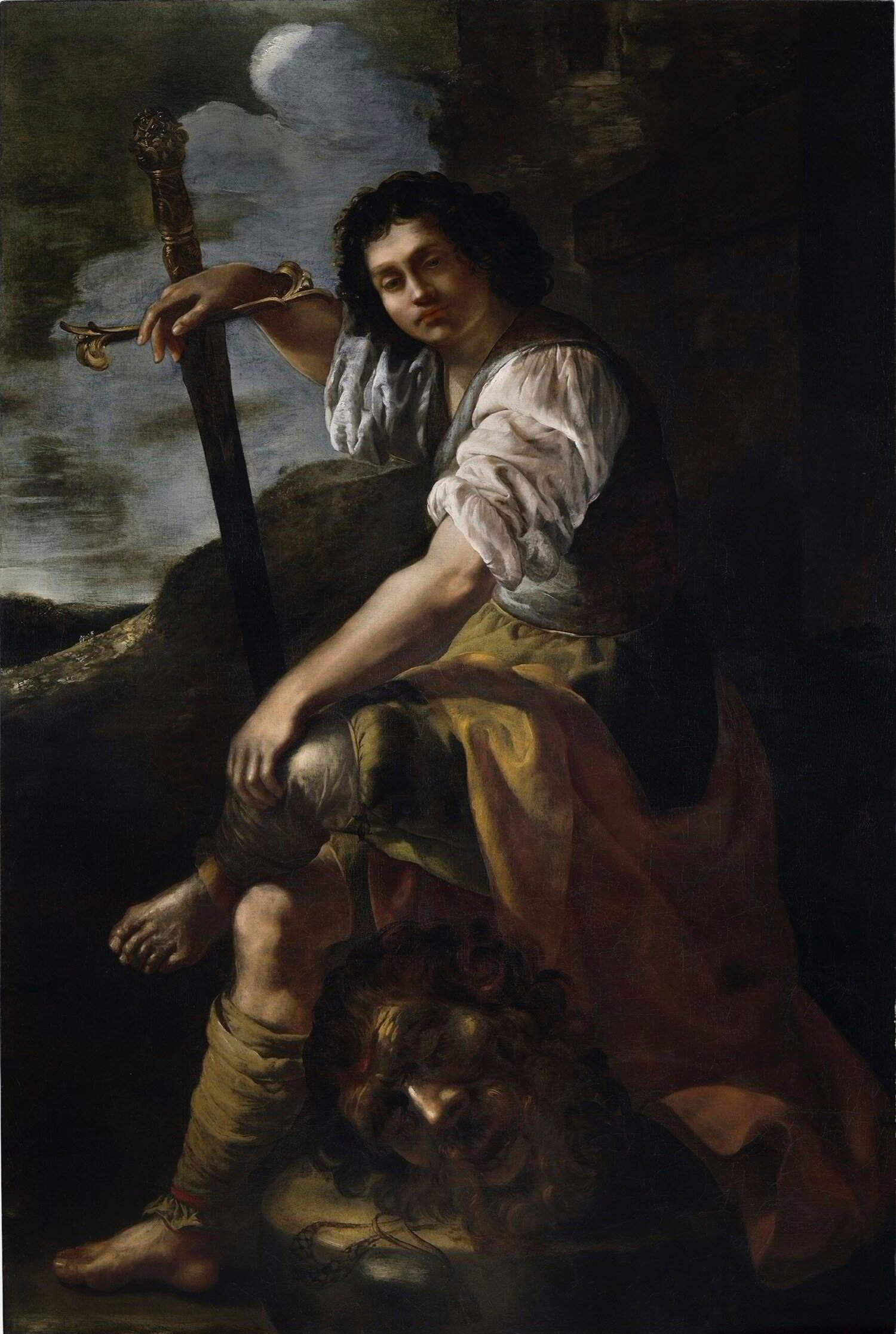Going up for auction at Sotheby’s in London on July 3 is Artemisia Gentileschi’s David with the Head of Goliath, one of the most recent additions to the painter’s catalog. The work has been known to scholars for some time, and had risen to headlines in 2020, when its owner, an English collector, was looking for a museum to display it. At that time, the painting had also been restored, by the English professional Simon Gillespie, who had subjected the painting to a thorough cleaning that had made it possible to find Artemisia’s signature, placed on David’s sword, and thus to find one more element in favor of the autographism, which by then, in any case, was already finding wide acceptance among scholars.
The painting depicts a scene charged with emotional tension, heroic resolve and deep dramatic intensity: it will go to auction with an estimate of £1-2 million (€1.18-2.36 million). There are currently no known contemporary sources mentioning it: the first text mentioning it dates from 1798, after which it leaves a brief trace in the early nineteenth century before disappearing altogether until, in 1996, it was rediscovered by Gianni Papi, who published it in the journal Nuovi studi as a work by Artemisia Gentileschi. Initially, the attribution did not find favor with another Artemisia expert, Raymond Ward Bissell, who believed the painting to be the work of Simon Vouet’s circle. Critics would not pronounce on the painting again until 2013, when Francesco Solinas published an essay in the catalog of the exhibition on Artemisia Gentileschi at Palazzo Blu (Pisa), in which the work was deemed an autograph repetition of a painting that Joachim von Sandrart had seen in Naples (“the less vibrant and firmer derivation”). Again, four years later Roberto Lattuada remained on a cautious position, citing Papi and Bissell, who considered it a version with variants of another composition, without, however, getting off the hook by deeming it difficult to judge the attribution on the basis of the old black-and-white photograph.
Finally, in 2020, Gianni Papi’s new study, together with Tracey Chaplin and Simon Gillespie, in Burlington Magazine, to reaffirm the attribution to Artemisia (there was then talk of a “rediscovered Artemisia Gentileschi”). Confirmations later came from Letizia Treves, Sheila Barker, and Maria Cristina Terzaghi.

Made in the period that marks the height of the artist’s career, probably around the 1630s-40s, the painting shows the young David in the moment immediately following his victory over Goliath. His determined gaze and composed pose emphasize a quiet power, more psychological than physical. It is an image of control, not triumphalism. According to Sotheby’s catalog entry, this is a painting probably made in England, where Artemisia had moved for some time for King Charles I and would not leave Britain since. Two passages at auction are also recorded: first in 1975, again at Sotheby’s, with attribution to Giovanni Francesco Guerrieri (it had gone unsold), and then in 2018, at Hampel’s in Munich, where it was initially listed as a generic painting of the school of Caravaggio, although the attribution was later corrected and the painting sold as a work by Artemisia Gentileschi. To give an idea of how the consideration of this work has changed over time, consider that at the time it was sold for 104,000 euros: it was the current owner who bought the painting.
The painting embodies Artemisia’s vision: the composition is direct, restrained, and modern in the way violence is suggested rather than shown. Unlike many contemporary depictions, Artemisia’s David does not raise his sword or openly triumph: instead, he is thoughtful, perhaps even reflective. This subtle and penetrating approach to narrative is typical of the painter, who is often more interested in the psychology of her subjects than in brutal action.
This return to the market of David with the Head of Goliath under the name of Artemisia Gentileschi represents a significant moment for the world of auctions and antiques: who will be able to win it?
 |
| A recently discovered work by Artemisia Gentileschi ends up at auction at Sotheby's |
Warning: the translation into English of the original Italian article was created using automatic tools. We undertake to review all articles, but we do not guarantee the total absence of inaccuracies in the translation due to the program. You can find the original by clicking on the ITA button. If you find any mistake,please contact us.